| |||||
| Decades: | |||||
|---|---|---|---|---|---|
| See also: | Other events of 1632 List of years in Denmark | ||||
Events from the year 1632 in Denmark .
| |||||
| Decades: | |||||
|---|---|---|---|---|---|
| See also: | Other events of 1632 List of years in Denmark | ||||
Events from the year 1632 in Denmark .

Christian IV was King of Denmark and Norway and Duke of Holstein and Schleswig from 1588 until his death in 1648. His reign of 59 years, 330 days is the longest of Danish monarchs and Scandinavian monarchies.

Johann Tserclaes, Count of Tilly was a field marshal who commanded the Catholic League's forces in the Thirty Years' War. From 1620–31, he had an unmatched and demoralizing string of important victories against the Protestants, including White Mountain, Wimpfen, Höchst, Stadtlohn and the Conquest of the Palatinate. He destroyed a Danish army at Lutter and sacked the Protestant city of Magdeburg, which caused the death of some 20,000 of the city's inhabitants, both defenders and non-combatants, out of a total population of 25,000.

The Second Treaty of Brömsebro was signed on 13 August 1645, and ended the Torstenson War, a local conflict that began in 1643 between Sweden and Denmark–Norway. Negotiations for the treaty began in February the same year.

The Kalmar War (1611–1613) was a war between Denmark–Norway and Sweden. Though Denmark-Norway soon gained the upper hand, it was unable to defeat Sweden entirely. The Kalmar War was the last time Denmark-Norway successfully defended its dominium maris baltici against Sweden, and it also marked the increasing influence of the two countries on Baltic politics.

The Round Tower is a 17th-century tower in Copenhagen, Denmark, one of the many architectural projects of Christian IV of Denmark. Built as an astronomical observatory, it is noted for its equestrian staircase, a 7.5-turn helical corridor leading to the platform at the top, and its views over Copenhagen.

Christian I, Prince of Anhalt-Bernburg, also known as Christian of Anhalt, was a German prince of the House of Ascania. He was ruling prince of Anhalt and, from 1603, ruling prince of the revived principality of Anhalt-Bernburg. From 1595 he was governor of Upper Palatinate, and soon became the advisor-in-chief of Frederick IV, Elector Palatine.

William, called William the Younger, was Duke of Brunswick-Lüneburg and Prince of Lüneburg from 1559 until his death. Until 1569 he ruled together with his brother, Henry of Dannenberg.
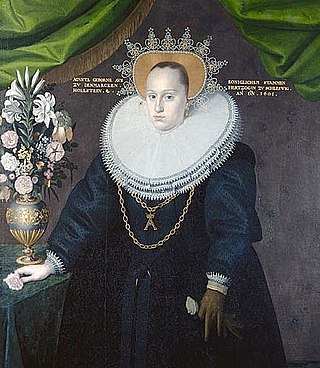
Princess Augusta of Denmark was the Duchess of Holstein-Gottorp as the wife of Duke John Adolf. She was the third daughter of King Frederick II of Denmark and Sophia of Mecklenburg-Güstrow. She was politically influential during the reign of her son, Duke Frederick III.
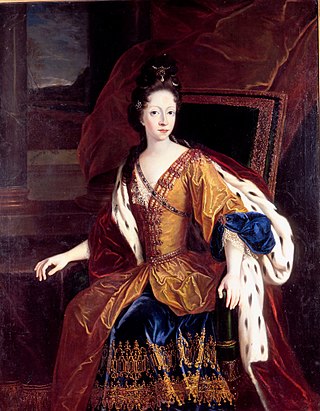
Princess Sophia Hedwig of Denmark and Norway was a Danish princess, the daughter of King Christian V and his queen-consort, Charlotte Amalie of Hesse-Kassel.
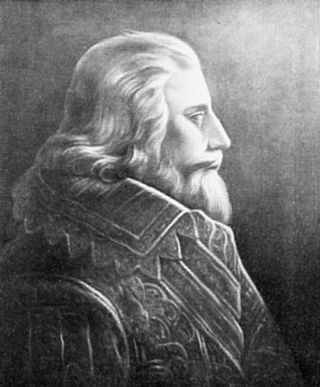
John Frederick of Schleswig-Holstein-Gottorp was the Lutheran Administrator of the Prince-Archbishopric of Bremen, the Prince-Bishopric of Lübeck and the Prince-Bishopric of Verden.
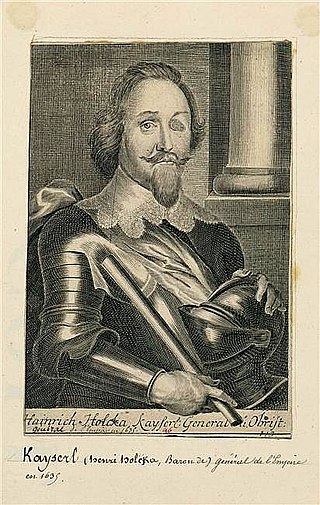
Heinrich Holk was a Danish-German mercenary in both Christian IV of Denmark's and Albrecht von Wallenstein's service during the Thirty Years' War.
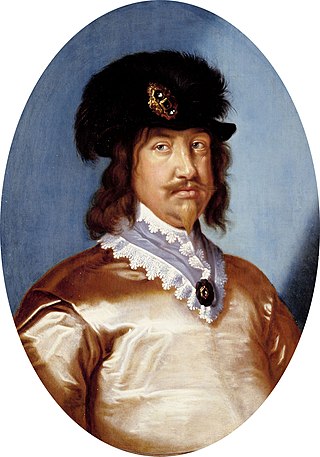
Christian was Prince-Elect of Denmark since 1610 and Heir Apparent to the Throne of the Kingdom of Norway since 1603. Dying in 1647, he was succeeded by his younger brother, Prince Frederik.
Avaskär is a village, with chapel and cemetery, in Kristianopel parish in eastern Blekinge in Sweden.

Prince Ulrik of Denmark was a son of King Christian IV of Denmark and Norway and his consort Queen Anne Catherine of Brandenburg. As the fourth-born son, he bore the merely titular rank of Duke of Holstein and Schleswig, Stormarn and Ditmarsh; however, he had no share in the royal-ducal condominial rule of Holstein and Schleswig, wielded by the heads of the houses of Oldenburg (royal) and its cadet branch Holstein-Gottorp (ducal). In 1624 Ulrik was appointed administrator of the Prince-Bishopric of Schwerin as Ulrich III. However, in 1628 Wallenstein's conquest of the prince-bishopric de facto deposed him. His father had to renounce all his family claims to prince-bishoprics in 1629. When in 1631 Swedish forces reconquered the prince-bishopric Ulrik failed to reascend as administrator.

Prince Charles of Denmark and Norway was the fourth son of Christian V of Denmark and his consort Queen Charlotte Amalie, and thus a younger brother of King Frederick IV. He never married and had no children, nor did he ever engage in any political activities. Instead he maintained a withdrawn life on his estates.

Jørgen Knudsen Urne was a Danish noble who served as Rigsmarsk from 1632 to 1642.

Jomfruens Egede is a manor house located three kilometres north-west of Faxe, a small town some 40 km south of Copenhagen, Denmark. It owes its current appearance to Sophie Amalie Moth who in the late 18th century altered it with the assistance of Caspar Frederik Harsdorff and Joseph Christian Lillie. The National Museum of Denmark has described it as possibly the finest example from the period.
Morten Steenwinkel, was a Danish architect and painter.

Vester Egesborg Church is located in Næstved Municipality of Region Zealand, Denmark. It was built in 1250–1300, with the addition of the tower and vestry around 1500. The choir was rebuilt at the end of the 18th century. The pulpit and altarpiece were carved around the middle of the 17th century by Abel Schrøder in the auricular style. The wrought iron baptismal font from the 1670s bears the arms of Niels Trolle and Helle Rosenkrantz. A farmer, John Jensen, believed that a church should also have a ship, so with his wife, he bequeathed money for that purpose; Neptunus hangs from the ceiling of the church.

Christianspris or Frederiksort was a Danish fortification somewhat north of the then Danish city of Kiel. In 1632 the Danish king Christian IV initiated the works of making a fortification on a land tongue on the West shore of the Kielerfiord on the Jernved peninsula. The purpose was to secure this land against German troops during the 30-years War. However, the town was short lived. Christian IV founded many towns and cities. It is thought this town only survived around 10 years.